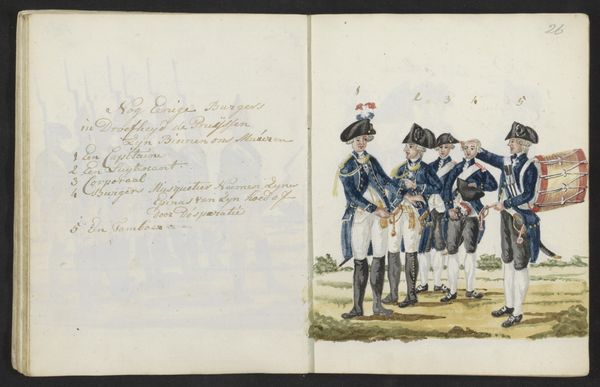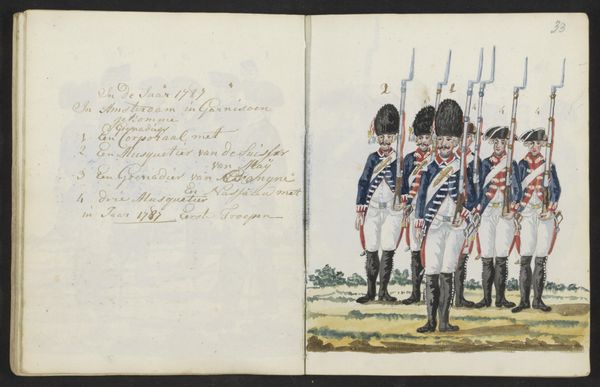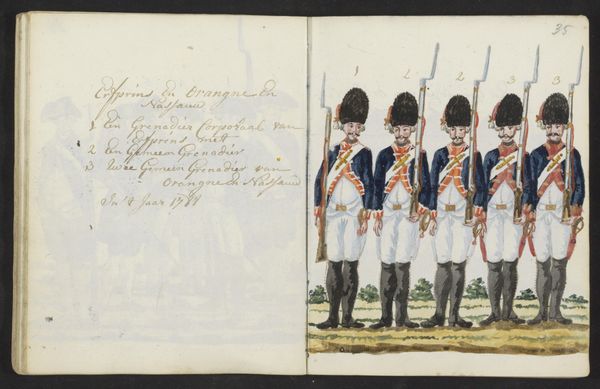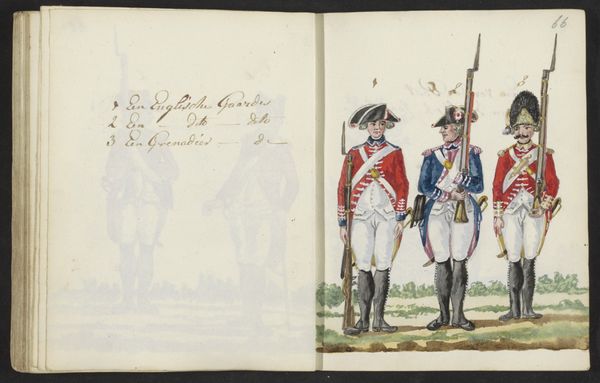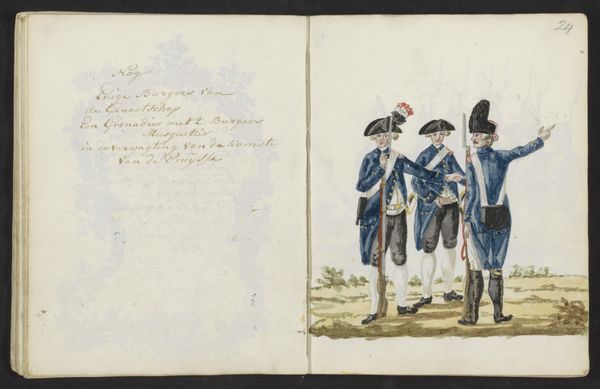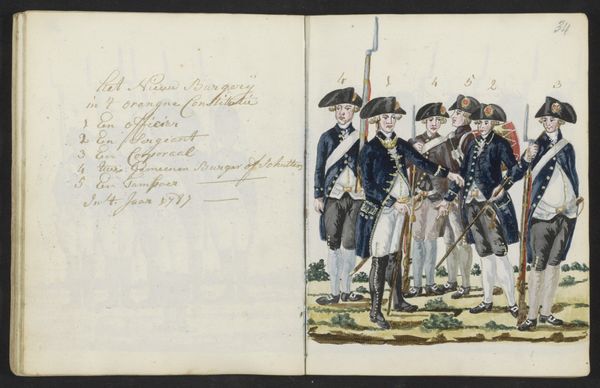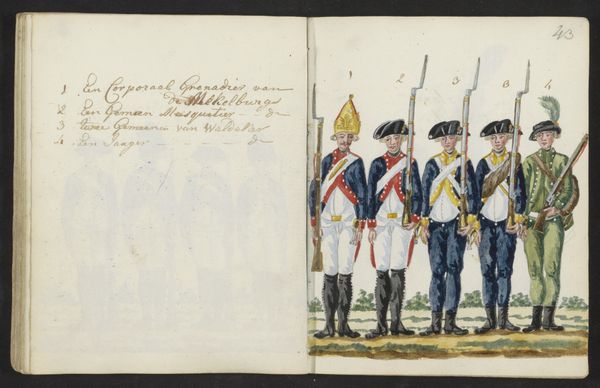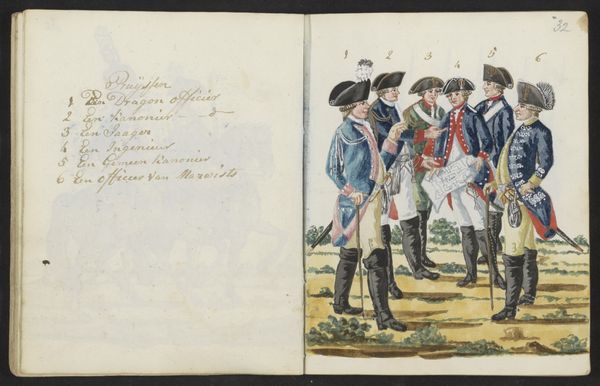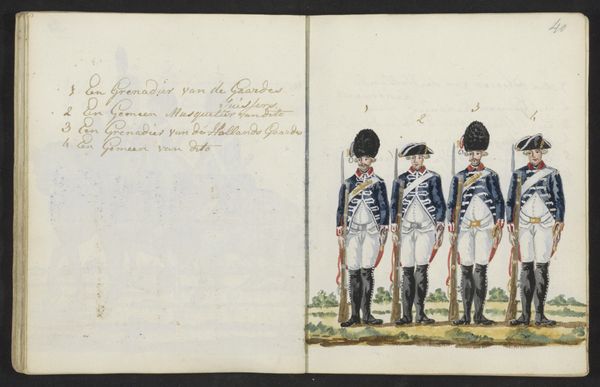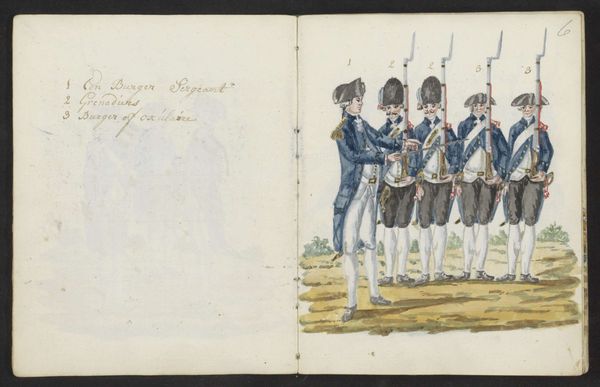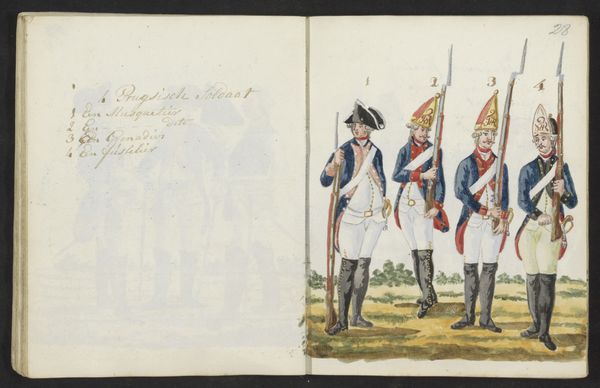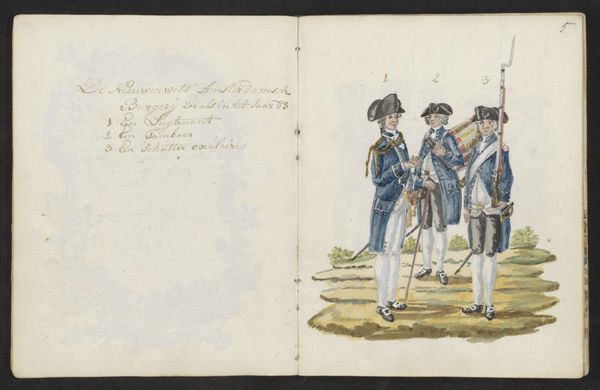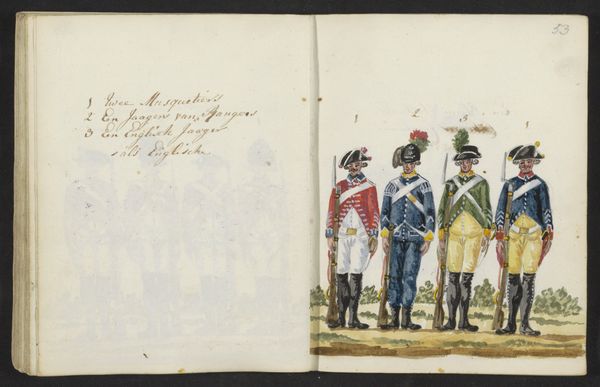
Uniformen van militairen in het Defensiewezen en het Utrechts garnizoen in 1786 1795
0:00
0:00
drawing, watercolor
#
portrait
#
drawing
#
neoclacissism
#
watercolor
#
coloured pencil
#
watercolour illustration
#
genre-painting
#
history-painting
Dimensions: height 197 mm, width 310 mm
Copyright: Rijks Museum: Open Domain
Editor: Here we have "Uniformen van militairen in het Defensiewezen en het Utrechts garnizoen in 1786," created around 1795 by S.G. Casten. It's a drawing made with watercolor, showing soldiers in uniform, almost like a catalogue. I'm curious, what jumps out at you when you look at this piece? Curator: Immediately, I'm drawn to the precise detail of the uniforms and the implied labor involved in their production. These aren't just images; they are records of material culture. The uniforms themselves represent a system of manufacture, trade, and consumption within the military and the society that supports it. Consider the cloth, the dyes, the tailoring, the metal for buttons and weaponry. Editor: So you're thinking about the hands that made all of this, and how those materials were acquired. Curator: Exactly. How do these specific colors and materials reflect the resources available and the power dynamics at play in 18th-century Dutch society? The creation of even a seemingly simple uniform like one of these involved numerous individuals and industries, all connected through a network of production and distribution. Were there regulations governing material quality or craftsmanship? Editor: That's something I hadn't really considered. I was just seeing them as... soldiers. Curator: These aren't simply representations of soldiers. It is an object reflecting class distinctions, mercantile activities, and military structures within a broader socioeconomic context. This record invites consideration beyond the mere artistic skill evident. Editor: That changes my perspective quite a bit! Looking at it now, I see less a picture and more a document of complex systems of labor. Thank you for shedding light on the material aspect of the piece.
Comments
No comments
Be the first to comment and join the conversation on the ultimate creative platform.
